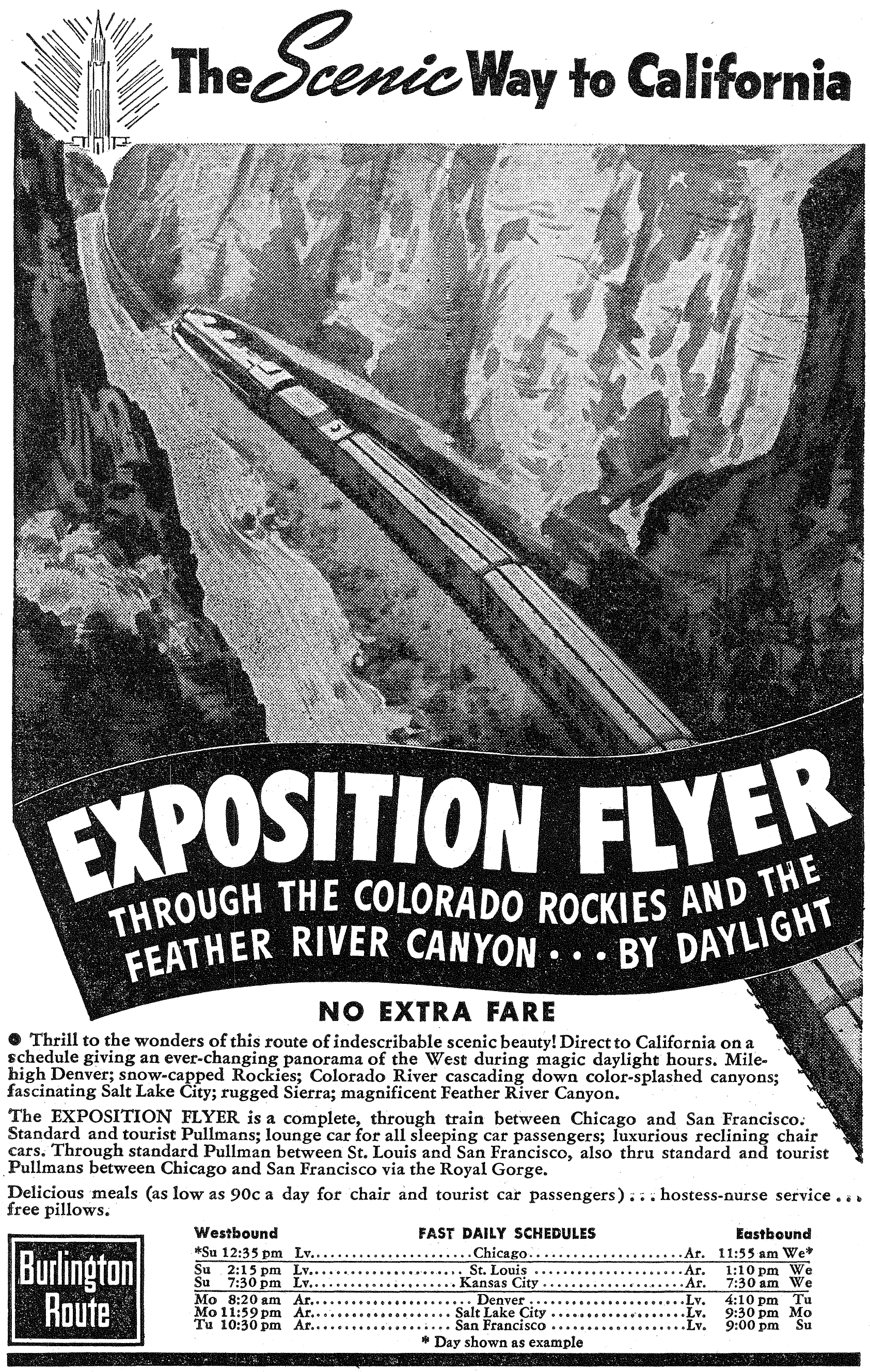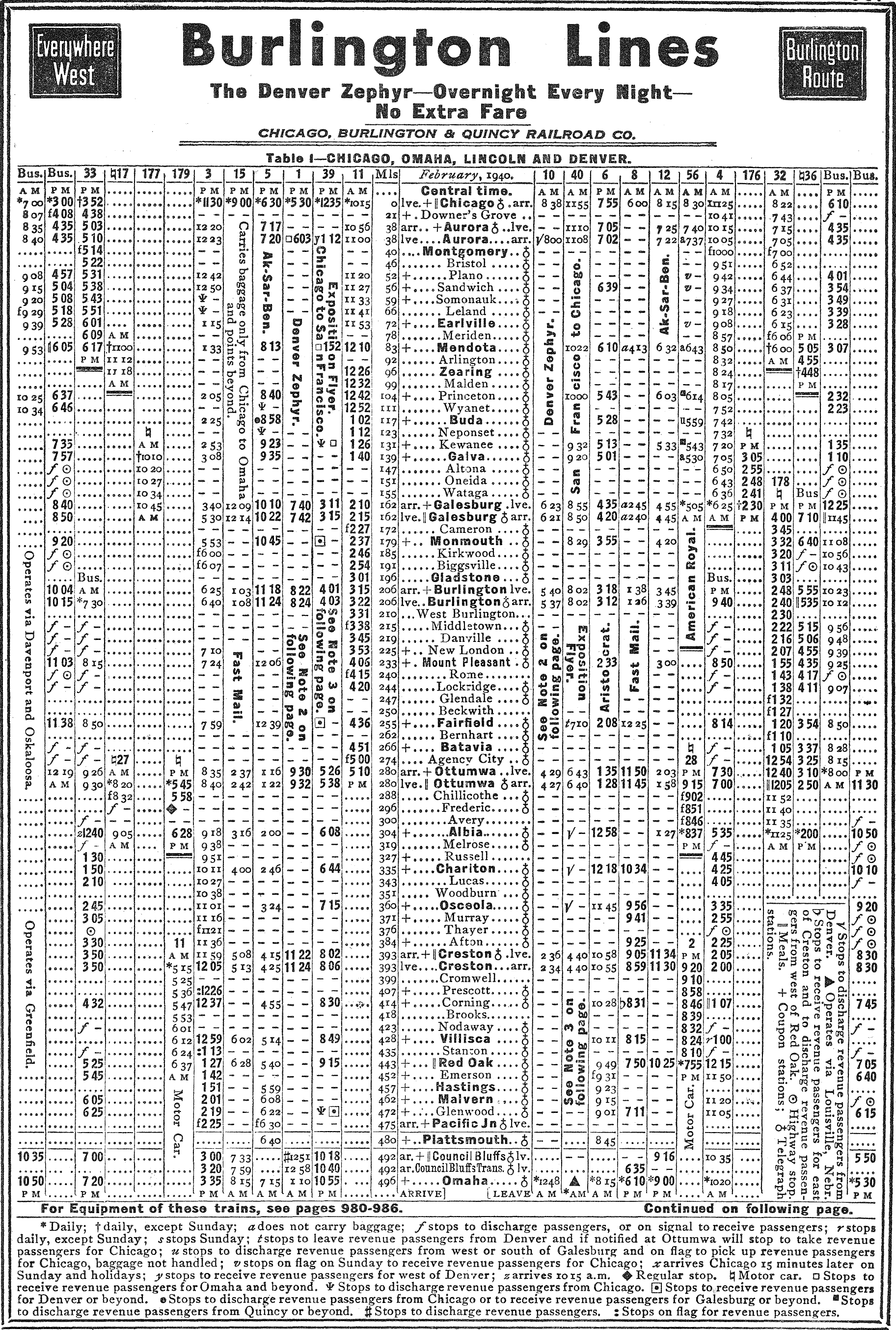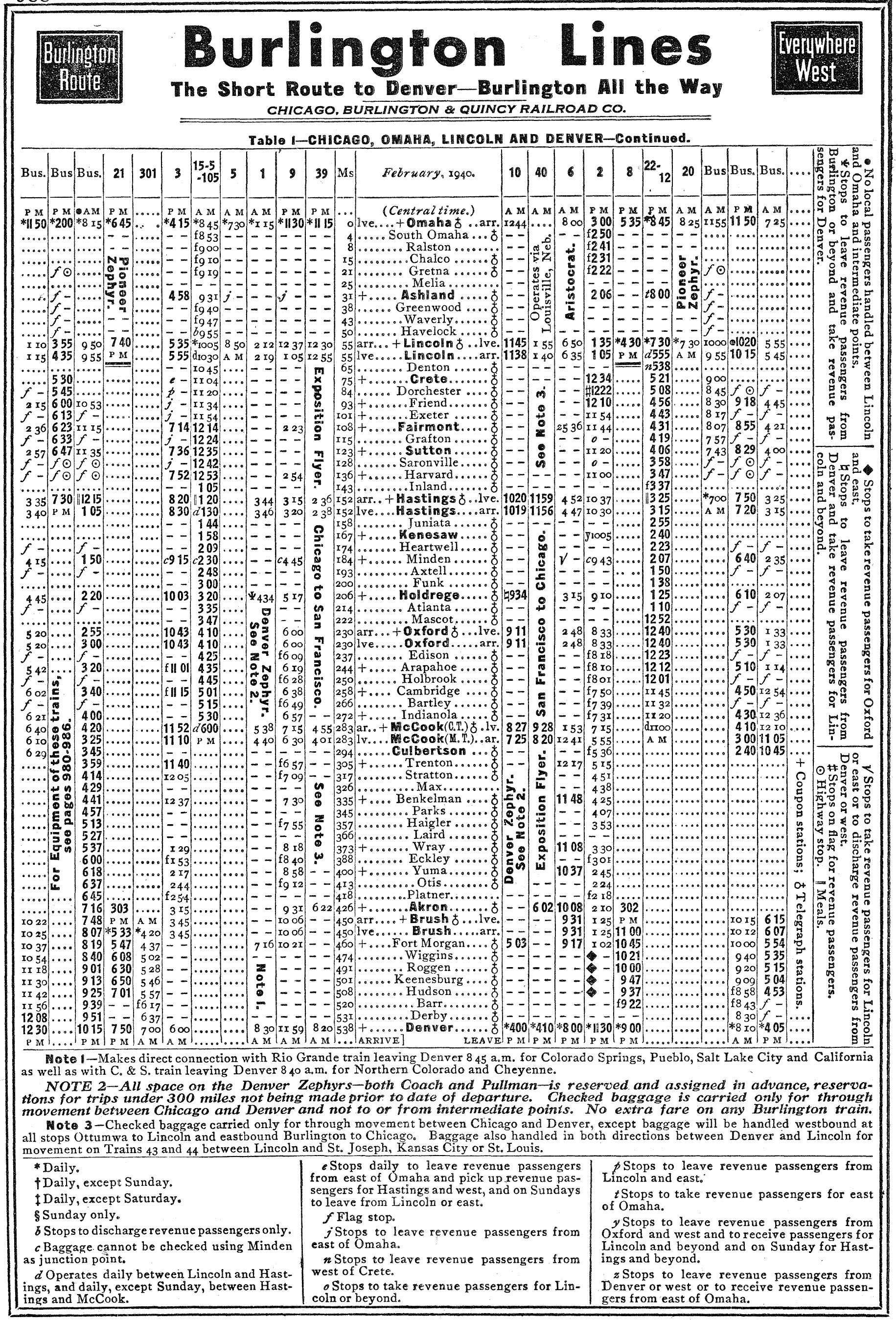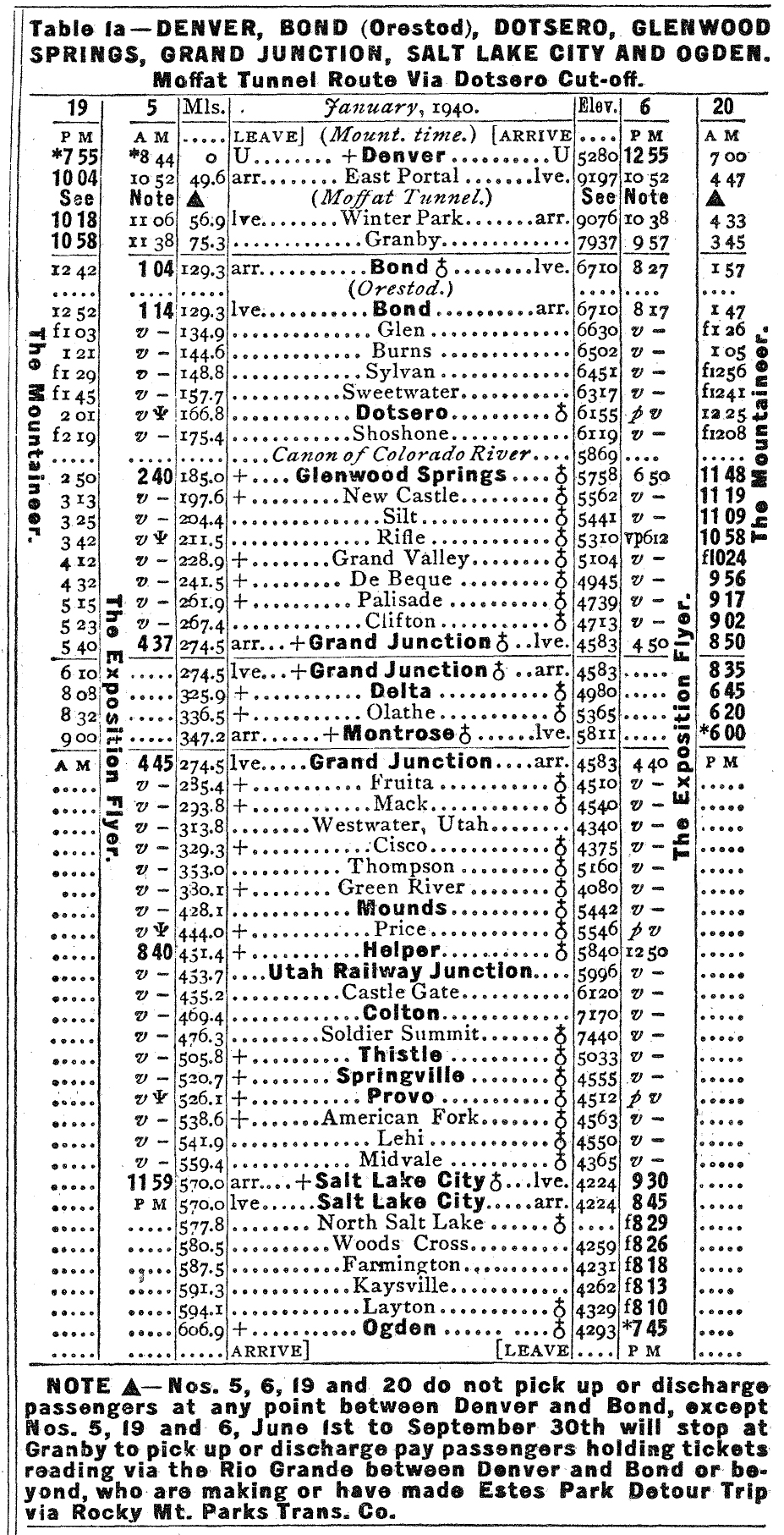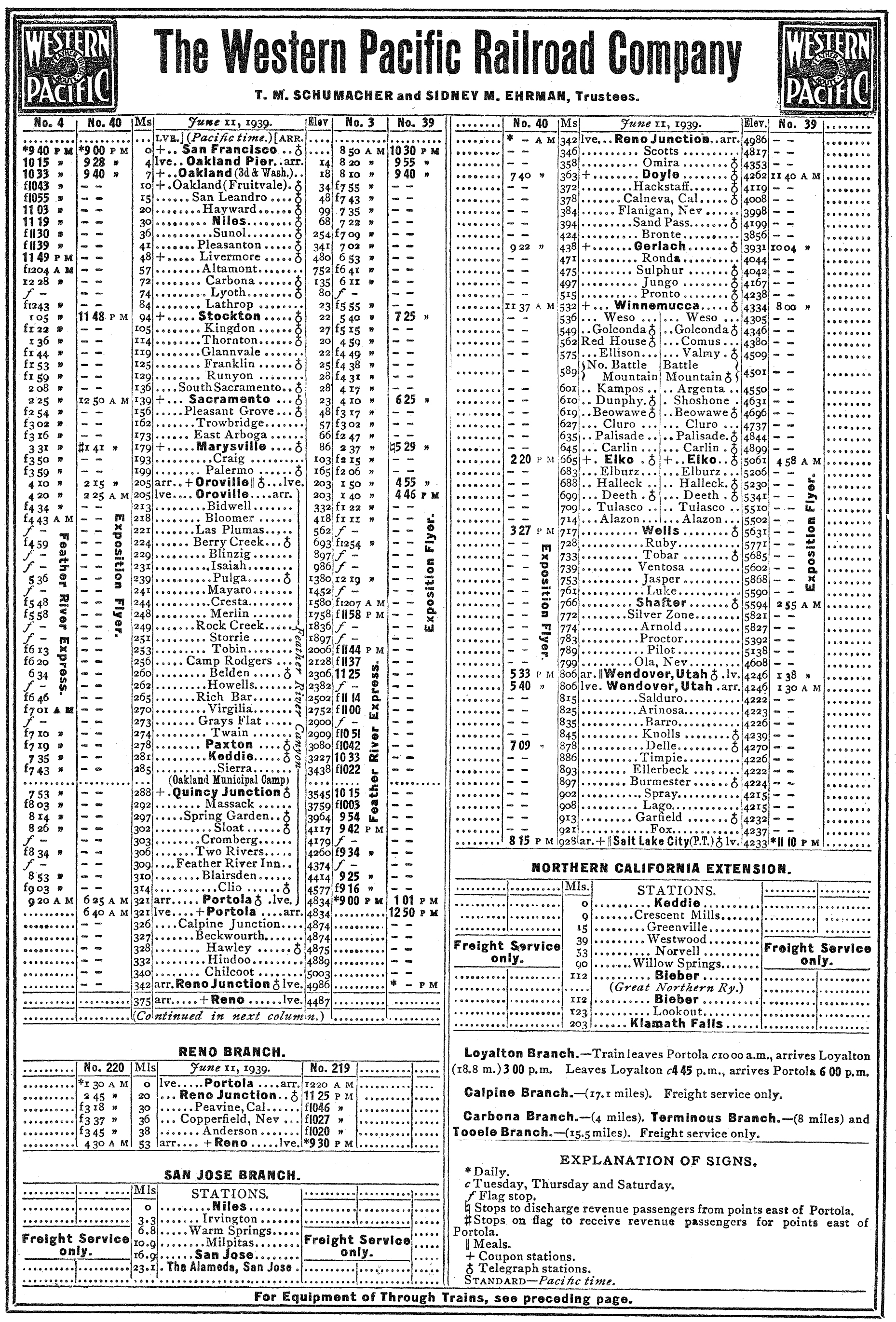"Exposition Flyer", Forerunner To The "CZ"
Last revised: August 25, 2024
By: Adam Burns
The Exposition Flyer was a non-streamlined passenger train operated by the Burlington, Western Pacific, and Rio Grande between Chicago and Oakland, California.
It was launched in 1939 to commemorate the Golden Gate International Exposition, a World's Fair held in San Francisco. The train was known for its speed and luxury, offering amenities such as air conditioning, a dining car, lounge, and standard Pullman sleepers.
Interestingly, the train was never intended to remain as a long-running service. In their book, "Streamliners: History Of A Railroad Icon," authors Mike Schafer and Joe Welsh note the heavyweight, steam-powered consist ran a schedule 20 hours slower than Union Pacific's newly streamlined City of San Francisco.
Nevertheless, the incredibly scenic route allowed the Exposition Flyer to maintain strong patronage. It continued to operate for a decade before the three railroads launched a new streamliner, the California Zephyr, one of the most successful of its era.
Photos
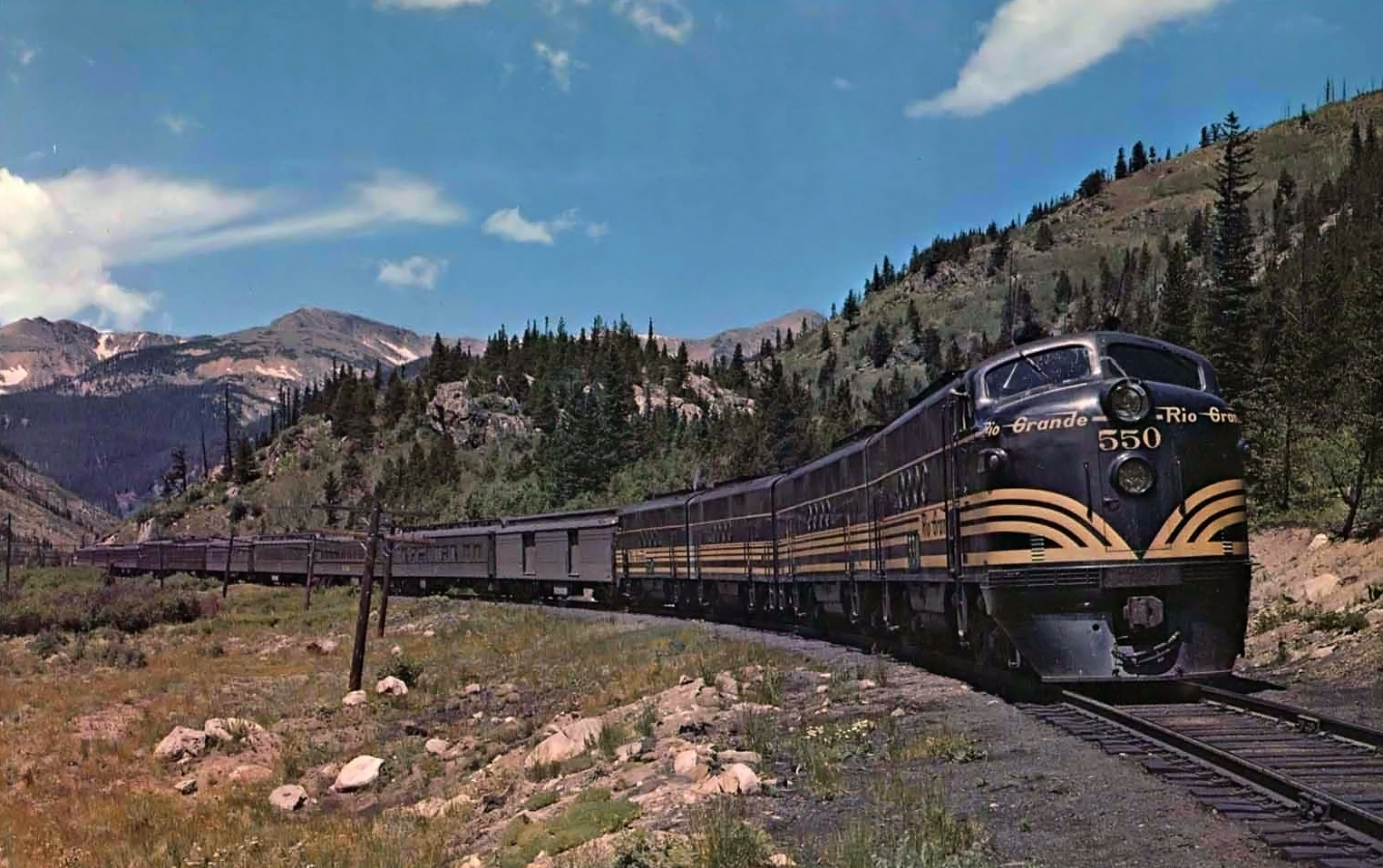 A rare color photo of the post-World War II transcontinental "Exposition Flyer," precursor of the "California Zephyr," 1.5 miles east of Moffat Tunnel led by an A-B-B-A set of FT's.
A rare color photo of the post-World War II transcontinental "Exposition Flyer," precursor of the "California Zephyr," 1.5 miles east of Moffat Tunnel led by an A-B-B-A set of FT's.Inauguration
The Exposition Flyer was inaugurated on June 10, 1939. It was a joint operation of three distinguished railroads – the Chicago, Burlington, and Quincy; Denver and Rio Grande Western; and Western Pacific .
The train was renowned for its remarkable route. It traced a picturesque trail from Chicago to Oakland, spanning a remarkable variety of landscapes across the central and western United States.
Golden Gate International Exposition
The historical backdrop of the Exposition Flyer's inauguration ties in with the Golden Gate International Exposition happening in 1939. This event, held on San Francisco's Treasure Island, was a World's Fair celebrating the completion of the San Francisco-Oakland Bay Bridge and the Golden Gate Bridge.
The Exposition Flyer was more than a means of transportation; it exemplified the elegance and luxury of travel during its time. A variety of services were offered onboard, including secure Pullman sleeping cars, a delectable dining car service, and later, dome cars for panoramic viewing of the outstanding landscapes.
While the train's introduction was timed with the Golden Gate International Exposition, its popularity urged its continuance, making it a permanent fixture on the tracks well beyond the exposition period. It was indeed a testament to its popularity that it continued to serve passengers for almost a decade.
The exact distance covered by the Flyer was an impressive 2,532 miles. This extensive route made it one of the most adventurous and intriguing rail travels of its time, offering a cross-sectional view of America's heartland and West.
On the eastern end, the train originated in Chicago’s magnificent Union Station. On the western terminus, it found its way to Western Pacific's 3rd Street Station in Oakland, thereby bridging two worlds and making transcontinental travel more accessible and enjoyable.
In addition, the train made notable stops at Denver Union Station, Burlington's Omaha Station (located at 1001 South 10th Street), and the Rio Grande Depot in Salt Lake City (located at 300 Rio Grande Street).
Consist (1940)
Burlington
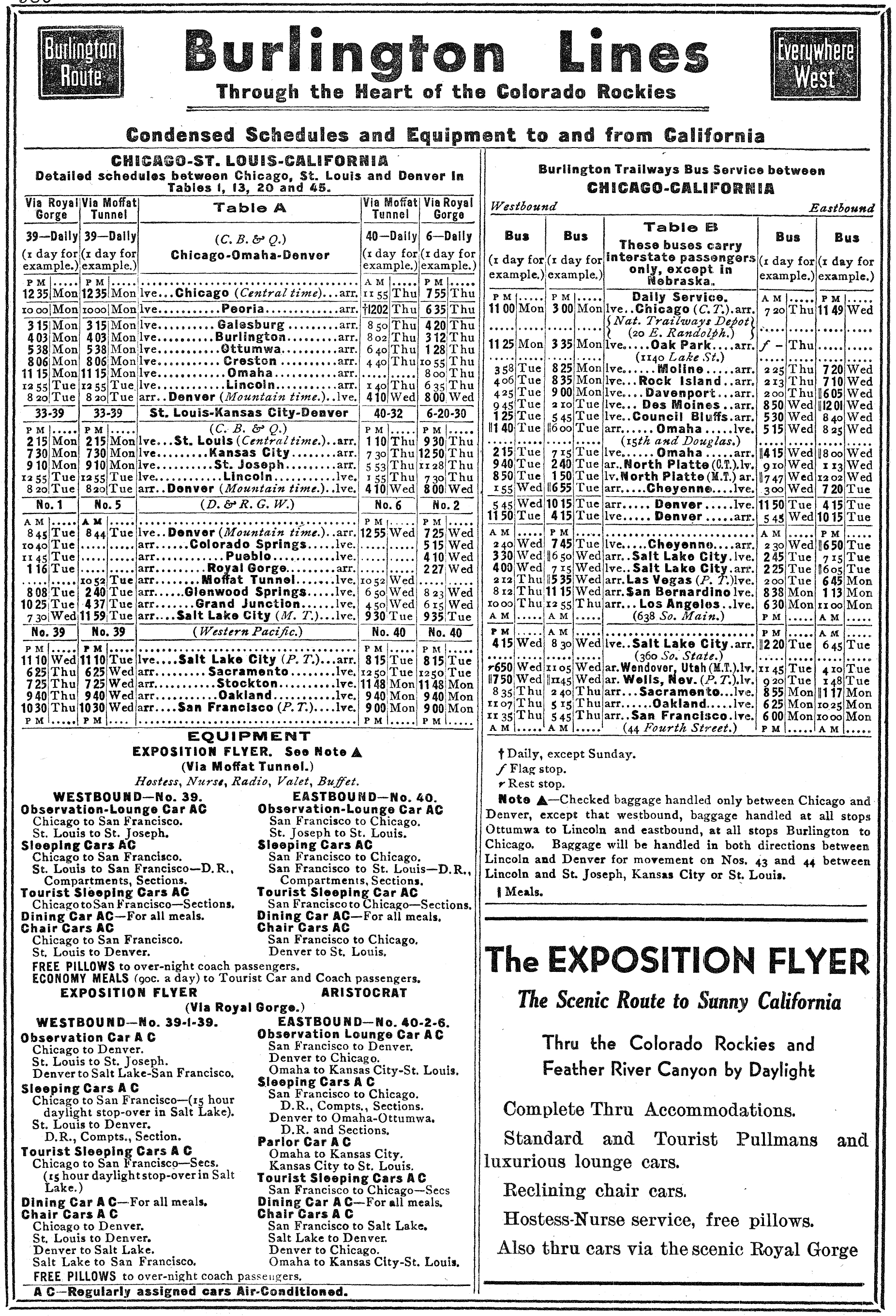
Rio Grande
Western Pacific
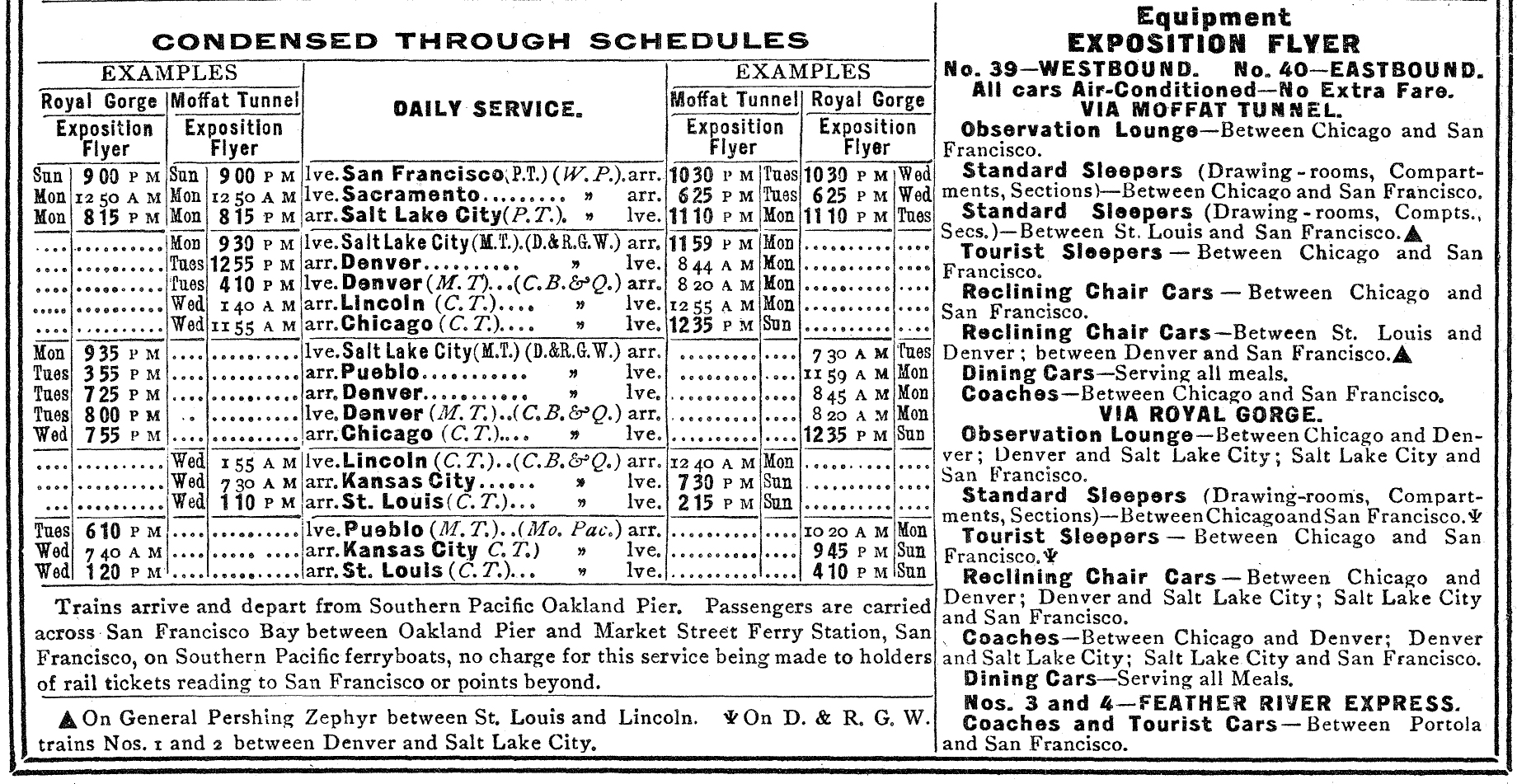
The technological evolution of the Exposition Flyer over its operational span was evident through the changes in its locomotives. Initially, the service utilized steam locomotives and heavyweight passenger cars.
However, as technology advanced, the train's rolling stock evolved to lightweight streamlined cars and diesel locomotives, a sign of things to come with the anticipation of the California Zephyr's launch.
In his book, "Burlington Route: A History Of The Burlington Lines," author Richard Overton notes the Burlington was the first railroad to handle through sleepers from coast-to-coast when the Exposition Flyer left San Francisco/Oakland on March 31, 1946 with a sleeper bound for New York.
In addition, the train handled the first through sleeper from the east coast when the Flyer departed Chicago Union Station a few days later on April 4th.
California Zephyr
Ultimately, the Exposition Flyer made its final journey on March 19, 1949. Its discontinuation was due to the introduction of the California Zephyr the next day, an even more luxurious and technologically advanced streamlined train, taking rail travel to new heights.
The CZ was an interesting train; it not only passed through some of America's most scenic western landscapes, such as the Rocky Mountains and California's Feather River Canyon, it was always designed purposefully as a tourist train. It was the nation's first fully domed train thanks to the new Vista-Domes produced by Budd.
Legacy
Though the train may no longer traverse America's rails, its legacy lives on in the annals of the nation's railway history. It was, in many ways, an embodiment of an era where rail travel was less about truncated timelines and more about the broader socio-cultural journey.
As a precursor to the California Zephyr, the Exposition Flyer played an integral role in setting high standards for transcontinental train services, in terms of services, accommodation, comfort, and landscape viewing.
While it may seem that the Flyer was just another train, its significance lies in its representation of rail travel's golden age. It symbolized a time when the journey itself was just as important as the destination.
Despite existing only for a decade, the Flyer's impact on railroad history remains substantial. Its impressive length and breadth of service, its focus on luxury and comfort, and its colossal route all set a benchmark for subsequent transcontinental services.
This historic train's end was not due to its inefficiency or lack of popularity, but rather the unveiling of a legend, the California Zephyr. When the latter was introduced, it was only natural for the Flyer to pass the reigns to its successor.
Through its journey, the train connected not only different geographical locations but also different cultures, societies, and economic hubs within America. It brought together people from different walks of life, making the train journeys a small universe in themselves.
Its legacy is not trivial. Its influence on the American railway scenario deserves recognition. It was more than a train; it was an era-defining symbol of exploration, journey, and innovation.
The Exposition Flyer intricately wove the fabric of America's railway history. From its elegantly-designed carriages to the soothing chug of its diesel engine, every component of this legendary train has a tale to recount.
The opulent dining cars of the Flyer are often remembered for the fine culinary experiences they furnished. They played host to numerous meals where passengers dined while watching the countryside swiftly passing by.
The pullman sleeping car was another wonder onboard. It provided passengers with private and clean sleeping accommodations, a luxury that was hitherto reserved for upper-tier passengers but was made accessible to all by the Exposition Flyer.
Upon its retirement, the train had not just covered numerous miles but also bonded countless people in mutual experiences of travel, exploration, dining, and conversation. This led to the birth of myriad stories that continue to be shared around American hearths.
The transition from the Exposition Flyer to the California Zephyr marked a monumental shift in the luxuries, comforts, and technologies accompanying train travel. While both trains were famous in their own right, the Flyer was undoubtedly the stepping stone to the subsequent paradigm shift in train travel experiences.
Timetable (1940)
Burlington
Rio Grande
Western Pacific
The legacy of the Exposition Flyer continues to guide and inspire modern train services. Its spirit of innovation, dedication to service, and passion for exploration remains an enduring inspiration, reinforcing the fact that every journey harbors the potential to be an extraordinary experience.
In a world where speed is often prized over the experience, the echo of the train's whistle serves as a reminder that it's not about how fast you arrive, but how well you travel.
The Exposition Flyer's legacy confirms the importance of cherishing every moment of a journey, embracing the scenic detours and appreciating the transformative opportunities offered through travel.
Sources
- Johnston, Bob and Welsh, Joe. Art Of The Streamliner, The. New York: Andover Junction Publications, 2001.
- Overton, Richard. Burlington Route: A History Of The Burlington Lines. New York: Alfred A Knopf, Inc. 1965.
- Schafer, Mike and Welsh, Joe. Streamliners, History of a Railroad Icon. St. Paul: MBI Publishing, 2003.
Contents
Recent Articles
-
New Mexico Railroad Museums: A Complete Guide
Apr 23, 25 02:25 PM
The enchanting state of New Mexico, known for its vivid landscapes and rich cultural heritage, is home to a number of fascinating railroad museums. -
New Hampshire Railroad Museums: A Complete Guide
Apr 23, 25 02:11 PM
New Hampshire, known for its breathtaking landscapes, historic towns, and vibrant culture, also boasts a rich railroad history that has been meticulously preserved and celebrated across various museum… -
Minnesota Railroad Museums: A Complete Guide
Apr 22, 25 12:17 PM
The state of Minnesota has always played an important role with the railroad industry, from major cities to agriculture. Today, several museums can be found throughout the state.

